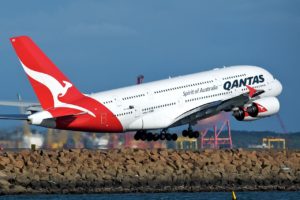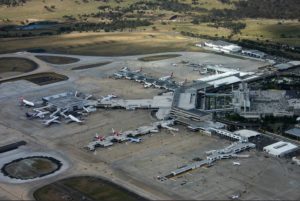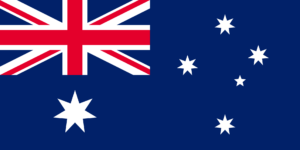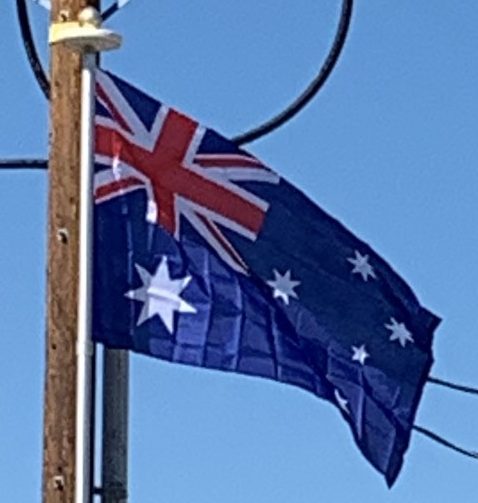
Overseas flights from Australia to Europe via the Eastern Hemisphere are known as the Kangaroo Route, whereas flights via the Western Hemisphere are known as the Southern Cross Route. In 1954, the first flight from Australia to North America was completed, as a 60-passenger Qantas aircraft connected Sydney with San Francisco and Vancouver, having fuel stops at Fiji, Canton Island and Hawaii. In 1982, a Pan Am first flew non-stop from Los Angeles to Sydney. A non-stop flight between Australia and Europe was first completed in March 2018 from Perth to London.

There are many airports around Australia paved or unpaved. A 2004 estimate put the number of airports at 448. The busiest airports in Australia are:
Sydney Airport Sydney, New South Wales SYD
Melbourne Airport Melbourne, Victoria MEL
Brisbane Airport Brisbane, Queensland BNE
Perth Airport Perth, Western Australia PER
Adelaide Airport Adelaide, South Australia ADL
Gold Coast Airport Gold Coast, Queensland OOL
Cairns Airport Cairns, Queensland CNS
Canberra Airport Canberra, Australian Capital Territory CBR
Hobart International Airport Hobart, Tasmania HBA
Darwin International Airport, Northern Territory DRW
Townsville Airport Townsville, Queensland TSV
There are 305 airports with paved runways.
There are 143 airports with unpaved runways.
Flag of Australia:
Design:
The flag of Australia is a defaced Blue Ensign: a blue field with the Union Jack in the canton (upper hoist quarter), and a large white seven-pointed star known as the Commonwealth Star in the lower hoist quarter. The fly contains a representation of the Southern Cross constellation, made up of five white stars – one small five-pointed star and four, larger, seven-pointed stars. There are other official flags representing Australia, its people and core functions of government.

The flag’s original design (with a six-pointed Commonwealth Star) was chosen in 1901 from entries in a competition held following Federation, and was first flown in Melbourne on 3 September 1901, the date proclaimed as Australian National Flag Day. A slightly different design was approved by King Edward VII in 1903. The seven-pointed commonwealth star version was introduced by a proclamation dated 8 December 1908. The dimensions were formally gazetted in 1934, and in 1954 the flag became recognized by, and legally defined in, the Flags Act 1953, as the “Australian National Flag”.
The Australian flag uses three prominent symbols: the Union Flag, the Commonwealth Star (also the Federation Star) and the Southern Cross (or Crux).
The Union Flag is thought to symbolism Australia’s history as six British colonies and the principles upon which the Australian Federation is based, although a more historic view sees its inclusion in the design as demonstrating loyalty to the British Empire.
The Commonwealth Star, also known as the Federation Star, originally had six points, representing the six federating colonies. In 1908, a seventh point was added to symbolism the Papua and any future territories. Another rationale for the change was to match the star used on the Coat of Arms, which was created in the same year. The Commonwealth Star does not have any official relation to Beta Centauri, despite the latter’s brightness and location in the sky; however, the 1870 version of the flag of South Australia featured the “pointer” stars, Alpha and Beta Centauri.
